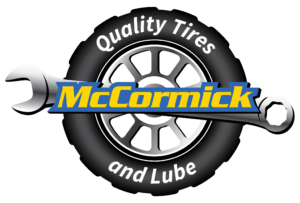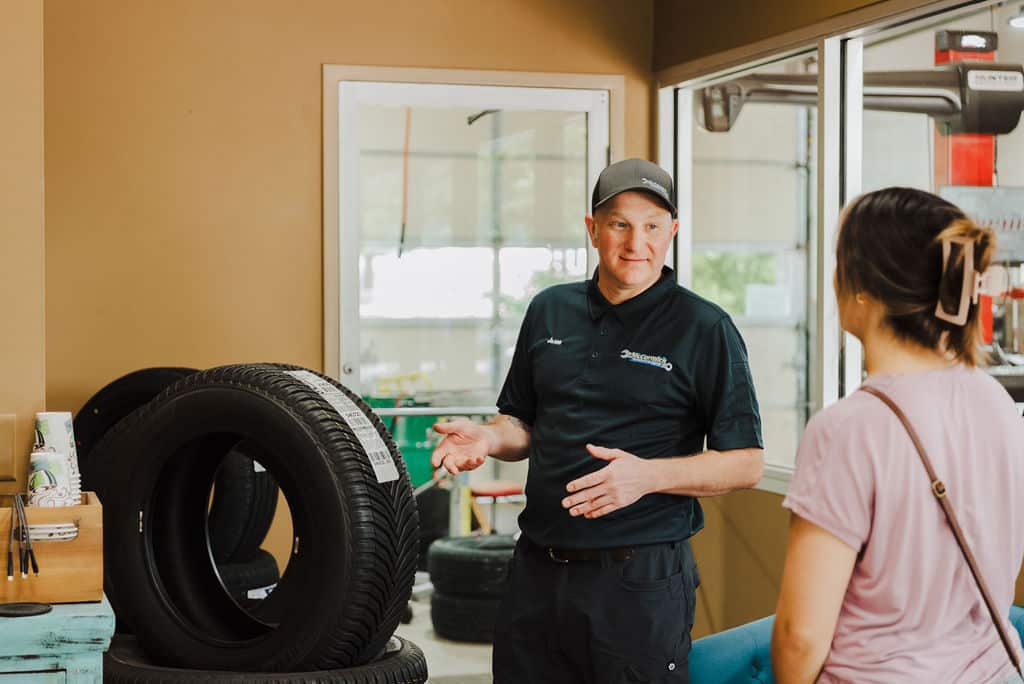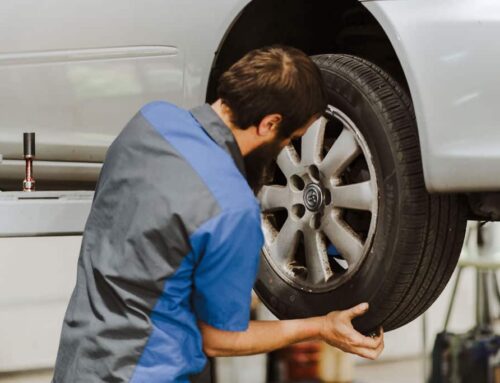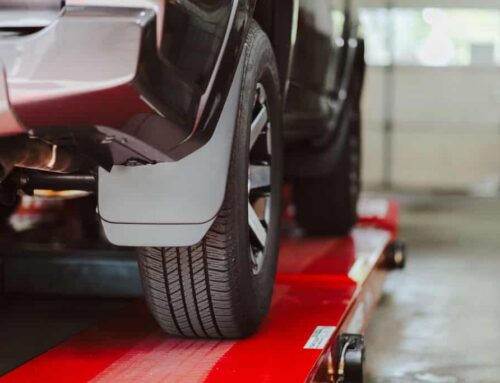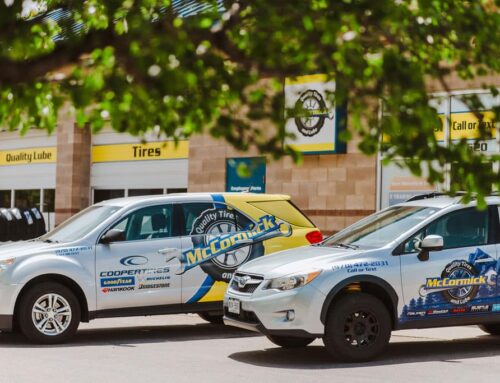As electric vehicles become more popular across the country, it’s important for owners to be well-prepared for the unique challenges that come with these new-age vehicles. Believe it or not, one unexpected challenge is handling a flat tire. Flat tires are a common issue for all vehicles, but there are some important differences between EVs and regular vehicles. Tire construction, weight distribution, and the tools required for tire repairs all differ with electric vehicles.
At McCormick Quality Tires and Lube, we are dedicated to helping our customers keep their cars in peak condition – this includes EV owners! In this blog, we will walk you through the key things to know about dealing with a flat tire on your electric vehicle. We will cover how to assess and diagnose the issue, a guide for changing or repairing the tire, and a list of tools you should have on hand in case an emergency tire repair is needed.
The Difference Between Electric Vehicle Tires and Traditional Tires
It’s important to understand how EV tires differ from tires that are used on traditional gas-powered vehicles. Here are some key distinctions:
- Heavier Load: Electric vehicles are heavier than traditional vehicles due to the weight of the battery. EV tires are specifically designed to handle this extra weight, featuring stronger sidewalls and a higher load rating. This makes them extremely durable, but more expensive to replace.
- Low Rolling Resistance: EV tires are often optimized for low rolling resistance to maximize the vehicle’s range. This means they are more energy-efficient, but can also wear out more quickly if they are not properly maintained.
- Tire Pressure Monitoring System (TPMS): Most electric vehicles are equipped with a Tire Pressure Monitoring System that alerts you when your tire pressure is too low. This is a fantastic tool to detect tire issues early, as EV tires tend to lose air slowly over time.
Diagnosing a Flat Tire on Your Electric Vehicle
Check the TPMS: If your vehicle’s TPMS has alerted you to low tire pressure, it’s time to inspect the tire. If the pressure is visibly low, there might be a slow leak or a completely flat tire.
Visual Inspection: Take a look at the tire for any obvious damage, like punctures, cuts, or embedded objects like nails or glass. If something is lodged in the tire, you may be able to use a sealant to temporarily fix the issue until you can have it professionally repaired.’
Listen for Hissing Sounds: If you suspect the tire might be flat but aren’t sure, listen. A hissing sound indicates air is escaping from the tire.
Tire Pressure Check: If you have a portable tire pressure gauge, you can check your tire pressure. If the pressure is significantly lower than the manufacturer’s recommended PSI, that confirms it is flat.
A Step-by-Step Guide on Changing or Repairing a Flat Tire on Your EV
Once you have confirmed that your electric vehicle has a flat tire, here’s a step-by-step guide to help you handle the situation safely and effectively.
Find a Safe Location: Before you get started, ensure your vehicle is in a safe location away from any traffic. Find a flat, stable surface where you can work effectively and ensure your hazard lights are on to alert other drivers.
Gather Your Tools: You’ll require the following tools to change or repair your EV’s flat tire:
- A jack
- A lug wrench (preferably low-profile)
- A spare tire (if you have to replace the tire)
- A tire repair kit
- A tire pressure gauge
- Wheel chocks
Loosen the Lug Nuts: Before you raise the vehicle, use the lug wrench to slightly loosen the lug nuts on the flat tire. This is easiest to do when the vehicle is still on the ground.
Raise the Vehicle: Use your jack to lift the vehicle. Ensure you’re following the manufacturer’s directions for proper lifting points. Always make sure the car is stable before proceeding.
Remove the Flat Tire: Once the car is raised, fully remove the loosened lug nuts and take off the flat tire. Set it aside and make sure the lug nuts are in a safe place for reuse.
Install the Spare Tire: Place your spare tire onto the wheel hub. Align the holes with the bolts and press it into place. Hand-tighten the lug nuts onto the spare tire – don’t fully tighten them yet.
Check the Tire Pressure: Once you replace the flat tire, check the tire pressure to ensure it is at the recommended PSI. If the pressure is low, fill it up!
Inspect and Clean Up: Double-check the vehicle for any tools or loose parts. Store your flat tire away properly.
Tools for Emergency Tire Repair on Your EV’s Tire
It’s helpful to carry a tire repair kit in your vehicle just in case you’re not near a repair shop and need a temporary fix. Here’s what we recommend having on hand:
- Tire Plug Kit: This kit will contain rubber plugs and a tool to help seal small punctures caused by nails or screws.
- Tire Sealant: Some EV owners carry a can of tire sealant that can be injected into the tire to seal small leaks.
- Portable Air Compressor: This can be used to inflate a tire if it’s only slightly under-inflated. This can be a useful tool after using a tire plug or sealant as well.
- Tire Pressure Gauge: This is a simple tool to check the air pressure in your tires.
- Portable Jack and Lug Wrench: A lightweight, portable jack and lug wrench will help you change your tire on the go.
When to Seek Help from McCormick
It can be possible to manage a flat tire on your electric vehicle, but there are times when you should seek advice from professionals, like our team at McCormick! If you have severe damage to your tire or if the sidewall is punctured, it may not be repairable. In this case, you’ll need to have a professional replace it. In addition, if you experience multiple flat tires in a short period of time, this could indicate an underlying issue with your vehicle, such as misalignment or suspension problems. This is something our team can address with ease!
Handling a flat tire on your EV doesn’t have to be overwhelming. Now that you understand the differences between EV tires and traditional tires, know what tools to have on hand, and have a step-by-step process to follow, you can tackle the situation with confidence! When in doubt, contact McCormick Quality Tires and Lube. We’re ready to assist with tire repairs, replacements, and maintenance.
